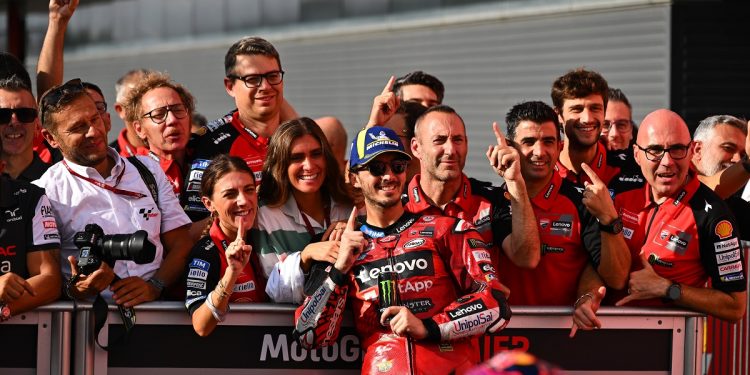As the MotoGP World Championship progresses, with 16 rounds completed and only four remaining, one might expect Francesco Bagnaia’s remarkable record of Grand Prix victories to place him firmly at the top of the standings. However, the introduction of Sprint races has profoundly affected the dynamics of the championship, proving to be a pivotal element in determining the overall leader.
Currently, Bagnaia has secured victories in eight of the 16 main races yet finds himself in second place, trailing Jorge Martín by 10 points. While Martín has managed to win just three main races and has faced challenges that kept him off the podium in four events, his overall consistency has been key. Bagnaia shares a similar podium miss record but has experienced three races where he scored no points, compared to Martín’s two, highlighting a crucial difference in their performances.
The impact of Sprint races cannot be understated. Martín has thrived in this format, maintaining a strong performance throughout the season. He has only missed out on a top-three finish in three of these shorter races and has scored points consistently, with only two races where he did not place in the points. In contrast, Bagnaia’s performance in Sprint races has not been as strong; despite achieving eight podiums, he has also encountered four races where he finished outside the points, diminishing his overall score.
In the Sprint race standings, Martín leads with an impressive 131 points, while Bagnaia trails with 103 points. In contrast, in the main race standings, Bagnaia holds a lead with 279 points, while Martín has accumulated 261. This indicates that while Bagnaia excels in the main races, Martín’s superior Sprint performances have become a decisive factor in his current championship lead.
As the season approaches its climax, the significance of these Sprint races becomes increasingly clear. For Bagnaia, the challenge will be to improve his performance

